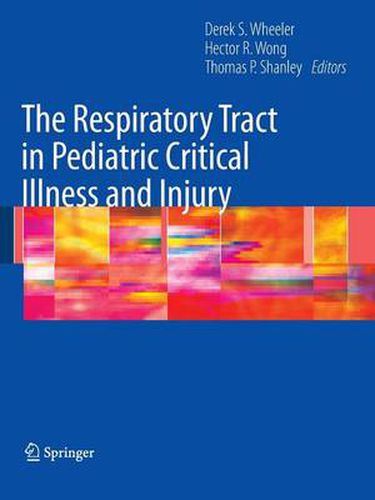Readings Newsletter
Become a Readings Member to make your shopping experience even easier.
Sign in or sign up for free!
You’re not far away from qualifying for FREE standard shipping within Australia
You’ve qualified for FREE standard shipping within Australia
The cart is loading…






This title is printed to order. This book may have been self-published. If so, we cannot guarantee the quality of the content. In the main most books will have gone through the editing process however some may not. We therefore suggest that you be aware of this before ordering this book. If in doubt check either the author or publisher’s details as we are unable to accept any returns unless they are faulty. Please contact us if you have any questions.
The principal role of the respiratory system is to permit ef? cient exchange of respiratory gases (O and CO ) with the environment. The respiratory system is unique in that it is constantly 2 2 exposed to a barrage of foreign substances from both the internal environment (at any one point in time, approximately one-half of the cardiac output is received by the lungs) and the external environment (with each breath, the respiratory tract is exposed to pollens, viruses, bacteria, smoke, etc). According to the Centers for Disease Control and Prevention, diseases of the res- ratory system were the seventh and eighth leading causes of deaths in children aged 1 to 19 years in 2003 [1]. Dr. George A. Gregory, one of the founding fathers of pediatric critical care me- cine, once estimated that acute respiratory failure accounts for nearly 50% of all admissions to the pediatric intensive care unit (PICU) [2]. Just as important are the many diseases that affect the respiratory system that are not associated with acute respiratory failure, but nevertheless constitute a major portion of the practice of pediatric critical care medicine, some of which account for signi? cant morbidity and mortality [3]. Once again, we would like to dedicate this textbook to our families and to the physicians and nurses who provide steadfast care every day in pediatric intensive care units across the globe. Derek S. Wheeler Hector R. Wong Thomas P.
$9.00 standard shipping within Australia
FREE standard shipping within Australia for orders over $100.00
Express & International shipping calculated at checkout
This title is printed to order. This book may have been self-published. If so, we cannot guarantee the quality of the content. In the main most books will have gone through the editing process however some may not. We therefore suggest that you be aware of this before ordering this book. If in doubt check either the author or publisher’s details as we are unable to accept any returns unless they are faulty. Please contact us if you have any questions.
The principal role of the respiratory system is to permit ef? cient exchange of respiratory gases (O and CO ) with the environment. The respiratory system is unique in that it is constantly 2 2 exposed to a barrage of foreign substances from both the internal environment (at any one point in time, approximately one-half of the cardiac output is received by the lungs) and the external environment (with each breath, the respiratory tract is exposed to pollens, viruses, bacteria, smoke, etc). According to the Centers for Disease Control and Prevention, diseases of the res- ratory system were the seventh and eighth leading causes of deaths in children aged 1 to 19 years in 2003 [1]. Dr. George A. Gregory, one of the founding fathers of pediatric critical care me- cine, once estimated that acute respiratory failure accounts for nearly 50% of all admissions to the pediatric intensive care unit (PICU) [2]. Just as important are the many diseases that affect the respiratory system that are not associated with acute respiratory failure, but nevertheless constitute a major portion of the practice of pediatric critical care medicine, some of which account for signi? cant morbidity and mortality [3]. Once again, we would like to dedicate this textbook to our families and to the physicians and nurses who provide steadfast care every day in pediatric intensive care units across the globe. Derek S. Wheeler Hector R. Wong Thomas P.